Back in 2004, when Tate Liverpool staged an exhibition exploring ceramics in 20th-century art, it was dubbed ‘A Secret History of Clay’. The title implied not only that little-known, avant-garde ceramics might be scattered throughout recent art history, but also that clay was something forward-looking artists worked on behind closed doors. At the time, nobody got too excited about the stuff of mantelpiece ornaments and tea sets, of handicraft over the big ideas that fine art is meant to have a monopoly on.
Yet, the past decade has seen a radical volte-face, with more artists awakening to this once-marginalized medium. While there is fresh appreciation for the pioneering figures who bridged contemporary art and ceramics – Ron Nagle, Ken Price, Peter Voulkos, and Betty Woodman, among others – current artworld superstars have incorporated ceramics as part of a wider art practice. Sterling Ruby has increasingly put his intensely physical, organic-looking ceramic sculptures center stage, as with his medium-specific exhibition organized by the Des Moines Art Center in 2019, while Theaster Gates’s ‘Afro-Mingei’ pottery is the bedrock of his socially engaged practice, now being surveyed at New York City’s New Museum. Meanwhile, following sweeping exhibitions like ‘Ceramix’ at La Maison Rouge in Paris (2016) and tomes such as Phaidon’s Vitamin C: Clay and Ceramics in Contemporary Art (2017), this fall’s ‘Strange Clay’ exhibition at London’s Hayward Gallery is the latest attempt to get a handle on the vast range of ceramic work now being produced by contemporary artists.
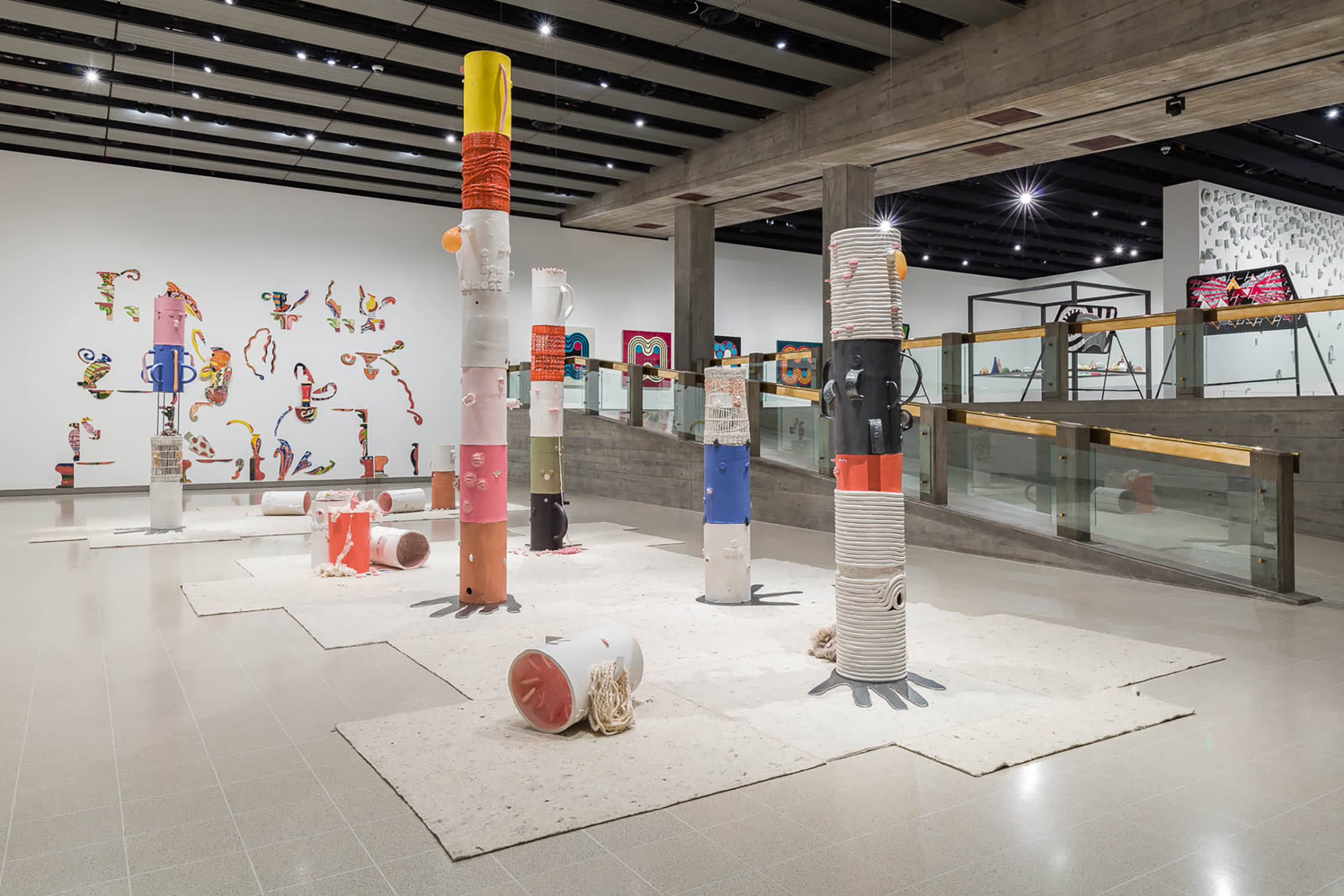
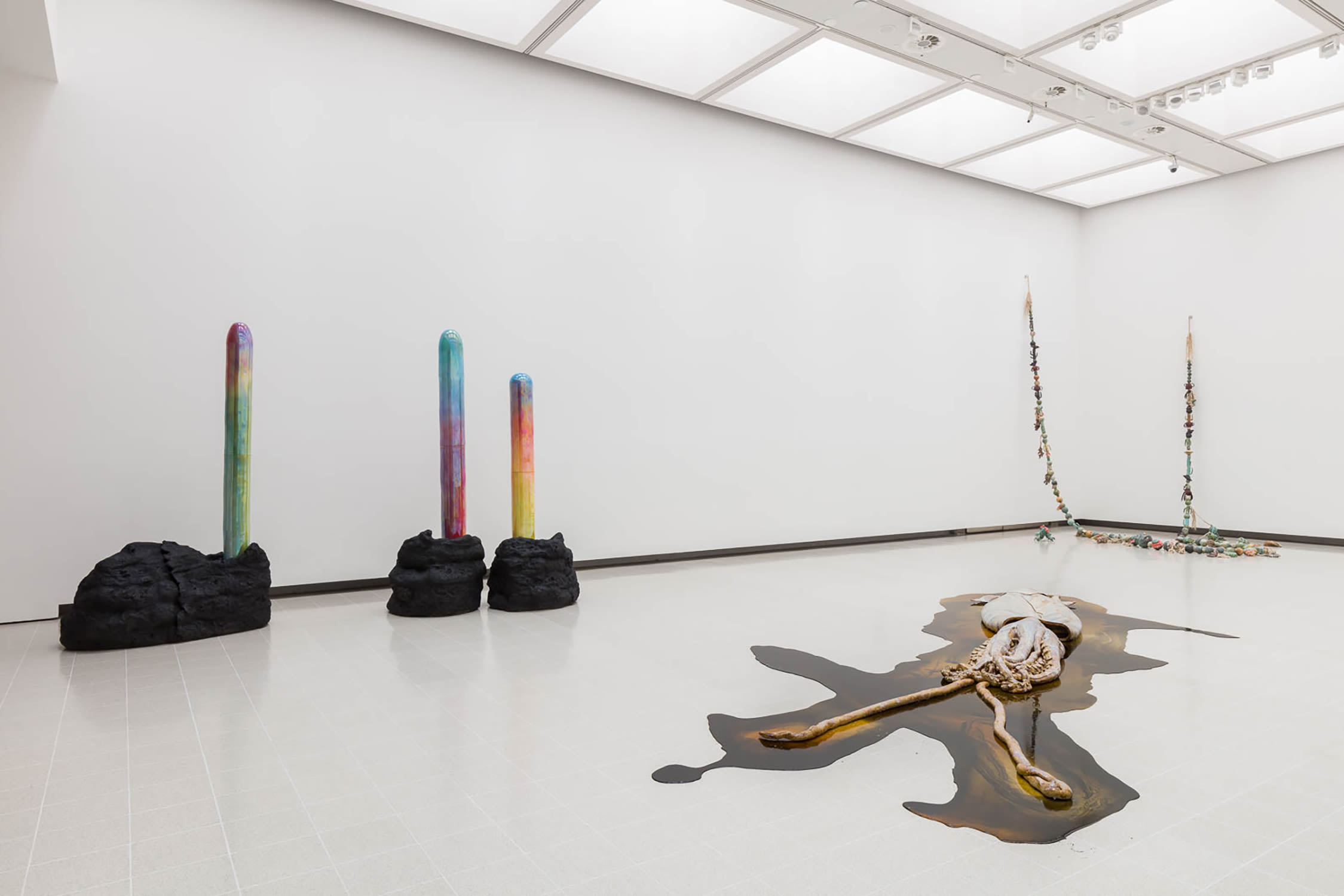
Hayward curator Cliff Lauson explains how a wider ‘cultural turn to craft and slowness’ has grown. ‘Some of that’s about how we reengage with the things of the world after the pandemic,’ he says. ‘What’s wonderful about ceramics is that everybody uses them on a daily basis in one form or another. There’s an affinity with the medium.’ Not so long ago, that very ordinariness might have been a turn-off, but with digital culture’s dominance, environmental collapse, and a pandemic, ceramics’ down-to-earth, physical immediacy and age-old methods are its strengths.
Clay is an ancient material that we’re all familiar with from scratching around in the mud during early childhood. The means by which artists employ it, however, are as diffuse as the traditions and techniques they must master to use it well. ‘The exhibition takes clay’s familiarity and looks one step further, at ways artists have excelled within the constraints of the medium and done things you wouldn’t have expected,’ says Lauson. The show’s roll call of 23 artists encompasses Woodman’s friezes of boldly painted ceramic fragments and the precise, lushly glazed, pop-savvy abstractions by West Coast artists Nagle and Price. Work by younger generations of artists includes Klara Kristalova’s porcelain folkloric bird women and horse-headed slackers, Woody De Othello’s outsize timepieces and cartoonish riffs on anthropomorphic jugs and bowls, and Brie Ruais’s earthy abstractions inspired by the landscape of the American Southwest. In the hinterland between art and pottery are Edmund de Waal’s minimalist series of small unique vessels.
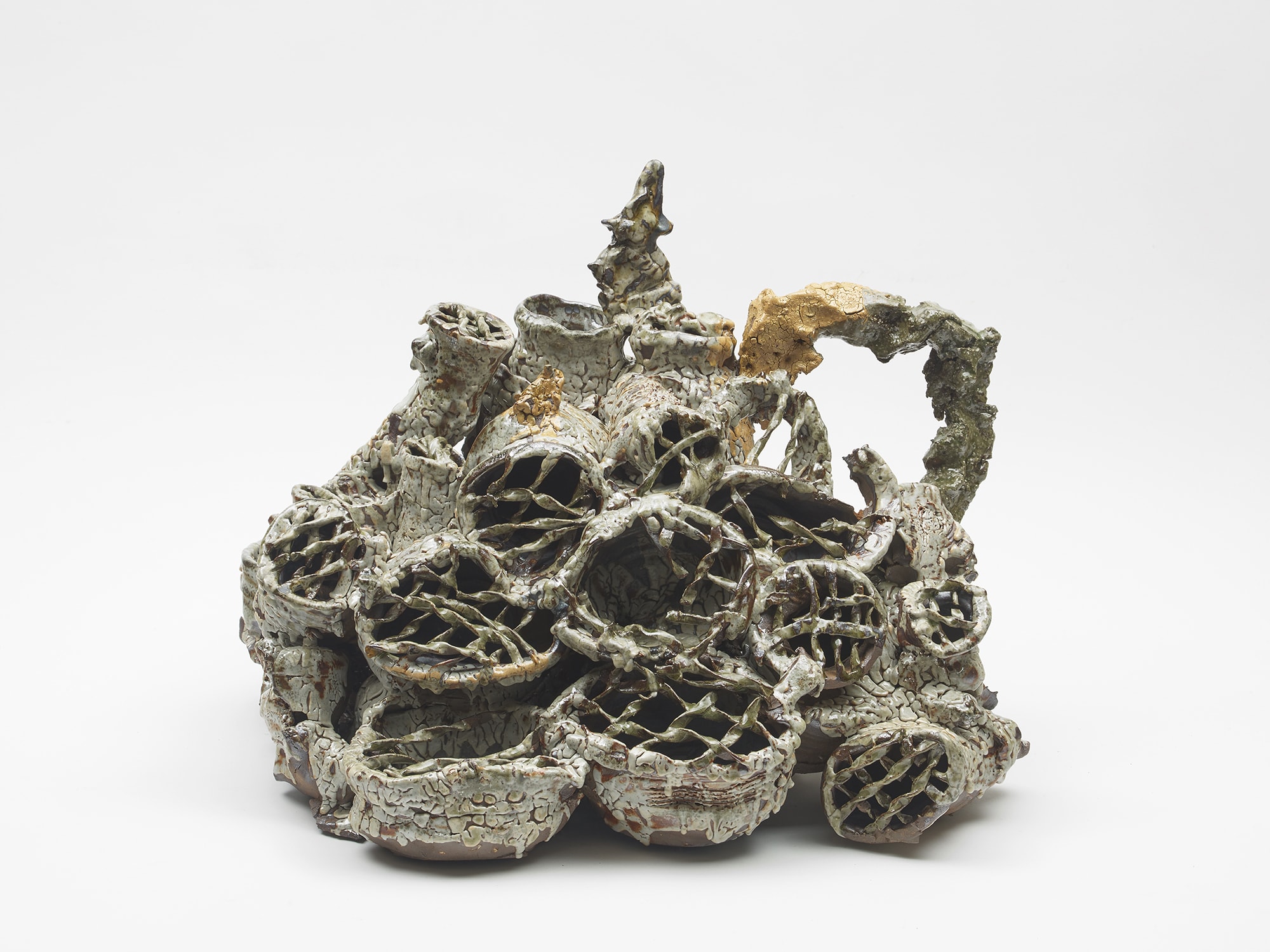
With their muddy, dripping surfaces and amorphous forms, the four sculptures on display by British artist Aaron Angell suggest a trippy exercise in chance and error, resembling plant-encrusted crockery, moldering pastry or mossy rocks. ‘I’m interested in sophisticated rustication, especially that of rural 15th- and 16th-century Japanese tea wares, deliberately making things look like accidents,’ Angell explains. The methods behind the sculptures are challenging, with the artist having produced two works using an anagama kiln: a cave kiln with roots in fifth-century Korea, in which clay takes days to fire. In place of a glaze, colors come from ‘what chemicals, gases, and ashes in the air from the fire do to the pottery in different sections of the kiln. It’s like a sped-up geological process.’
Angell has become a major force in UK ceramics art via Troy Town Art Pottery, a studio he established in 2013. Its residency program has seen tens of artists who had never previously worked with clay explore the material’s challenges. While Angel’s goal was to take ceramics beyond the pottery studio’s traditional bounds, he points out that using clay leads to an inevitable reckoning with the past. ‘It’s humanity’s oldest material,’ he tells me. ‘In broad terms, everything that can be done with it has already happened. There hasn’t been a new way of firing ceramics in 200 years. That’s interesting. You’re not just limited by what it can do on the day, you’re limited by this whole history.’
The new generation is plotting its own course through ceramic history and unearthing forgotten legacies: the achievements of Voulkos, for instance, who trailblazed ceramics as sculpture. The San Francisco-based art dealer Jessica Silverman represents two ascendant ceramics artists who draw on marginalized cultural histories: De Othello, whose recent work has looked at Yoruba traditions, and Rose B. Simpson, who ‘descends from many generations of ceramicist matriarchs’ of Pueblo culture. As Silverman observes, ‘The old hierarchies of artistic media are being reshuffled with a shift away from collecting only the art of straight white men. Ceramics have long ranked highly in Asian and Native American culture.’
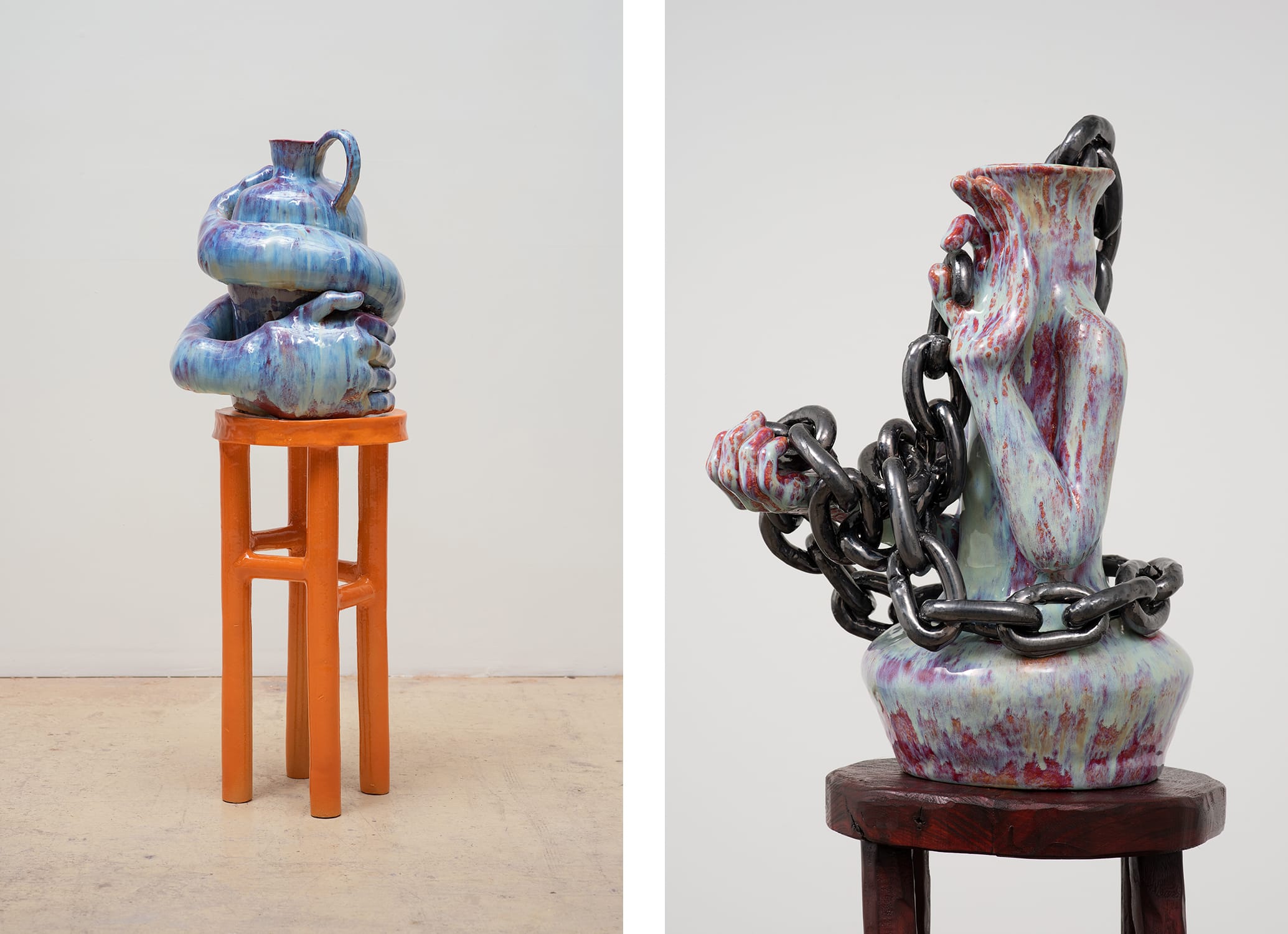
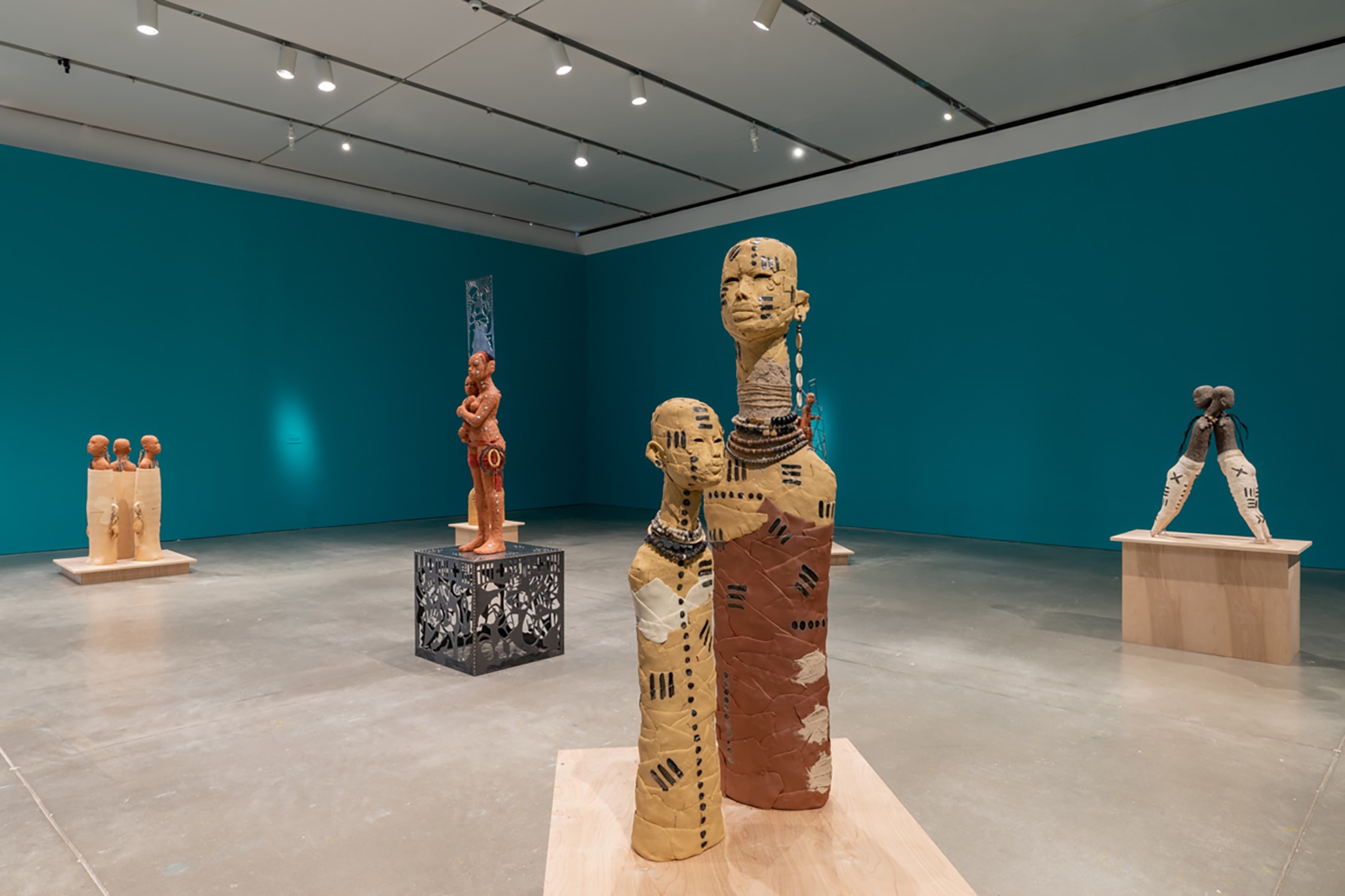
In autumn 2021, Phoebe Collings-James’s hit debut solo show, ‘A Scratch! A Scratch!’, at Camden Arts Centre, London, explored themes of the body, violence, and eroticism across history using sound and ceramics, including huge pots and hanging bells of coiled clay, nude torsos, and painterly glazed tablets. ‘I’ve worked backwards in terms of finding the material first,’ she says. Drawn to clay as a ‘responsive, reciprocal’ medium, her journey began with learning hand-building on a residency in Nove, a town in northeast Italy noted for its ceramics. While living in New York five years ago, the artist discovered the work of African American ceramicist Doyle Lane. His delicate vessels, with their exquisitely tactile, gorgeously hued surfaces, suggested ‘forms, colors, and a philosophical approach that made sense to me’. So, too, Magdalene Odundo’s fat-bellied, swan-necked, open-mouthed pots drawing on global traditions, including those of Africa, China, Mexico, and Ancient Greece. In spring 2022, Collings-James’s and Odundo’s work was included in the group show ‘Body, Vessel, Clay’ at Two Temple Place in London, exploring the undersung legacy of Nigerian potter Ladi Kwali and her significance for Black women artists. Collings-James recently undertook a residency at the Archie Bray Foundation, the groundbreaking ceramic art center in the Colorado Rockies that Voulkos co-managed in the 1950s.

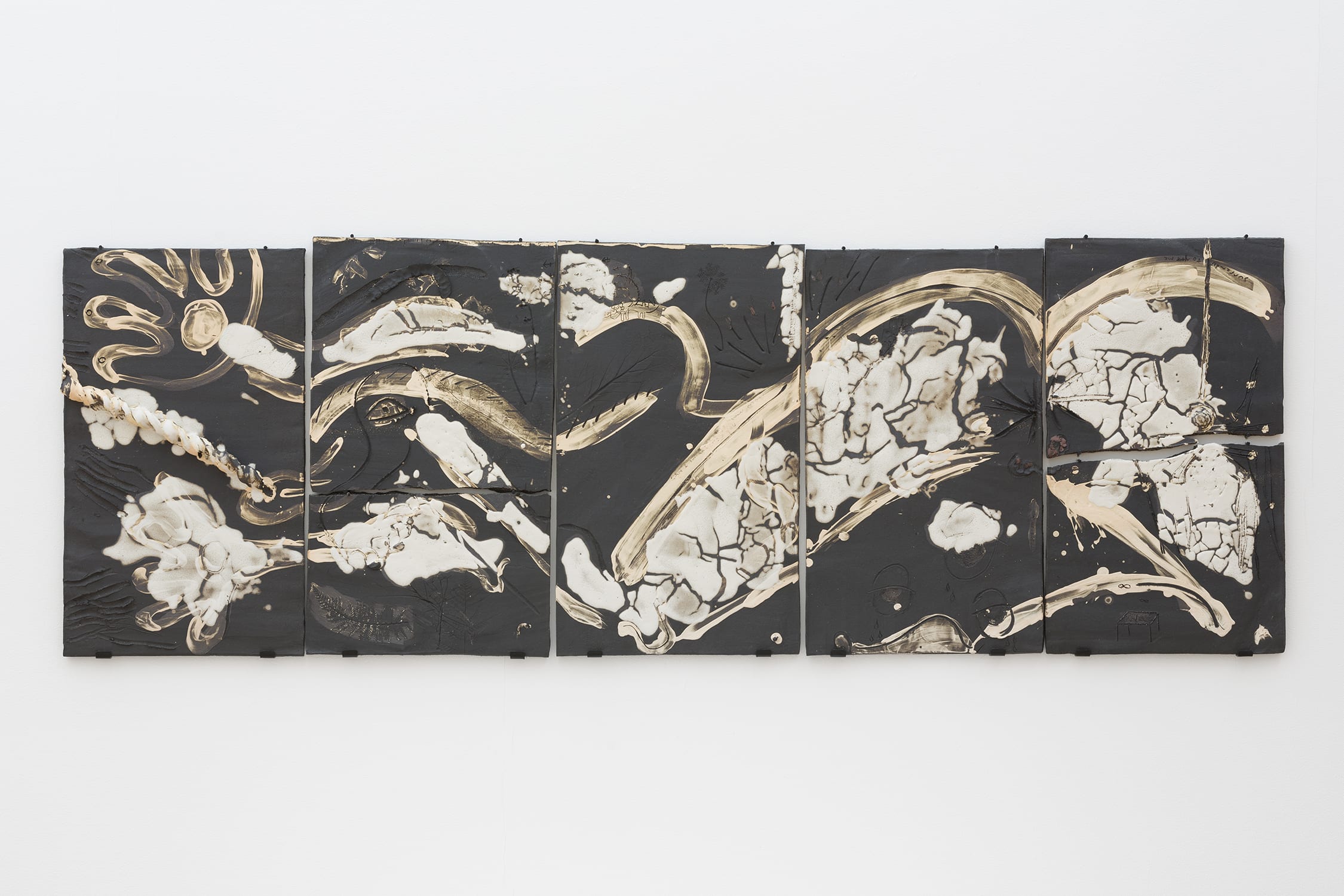
Even for seasoned art lovers, this language of ceramics – the various building techniques, firing processes, and glazes that artists use, as well as the forebears they reference – can be a little mystifying. Collings-James has noticed how people ‘really respond to work: emotionally, wanting to touch. Yet, they’re nervous talking about it and think, “I don’t know how this works”.’ Angell hopes the surge of ceramic art in galleries will engender ‘a more nuanced focus and understanding of the material within that’. Though he is careful to point out that ‘it shouldn’t be interesting because of its technicalities. It should still be good sculpture.’
‘The thing that brings all of those artists together is having to understand the discipline of the medium,’ says Lauson. ‘It is so tricky, in terms of establishing an outcome, of being comfortable with the randomness that different processes throw up. That’s why artists love it.’
Jessica Silverman will present works by Woody De Othello and Rose B. Simpson at Art Basel in Miami Beach.
Skye Sherwin is an art writer based in Rochester, UK. She contributes regularly to The Guardian and numerous art publications.
Captions for full-bleed images: 1. Detail of a work by Woddy De Othello presented by Jessica Silverman at Paris+ par Art Basel 2022. 2–4. Installation views of work by Takuro Kuwata (2), Bri Ruais (3), and Betty Woodman (4) in the exhibition ‘Strange Clay: Ceramics in Contemporary Art’, Hayward Gallery, London, 2022–2023. Photos by Mark Blower. Courtesy of the Hayward Gallery. A dark filter was applied over the top image for readability.